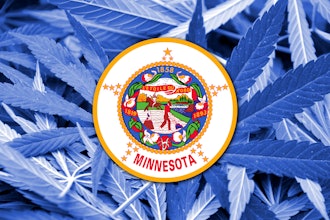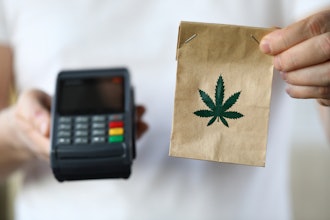
Just about everyone agrees that labeling requirements are a critical benefit of cannabis regulation, ensuring consumers are provided with important product information, instructions, and warnings. But a lack of consensus on what information should be included and how it should be displayed has resulted in excessive label content, lack of standardization, and constant changes that create confusion among consumers, unsustainable costs for businesses, and headaches for regulators.
Crowded, inconsistent, and constantly changing
Compared to other consumable products like food and alcohol, cannabis labels attempt to convey far more information on relatively smaller packages. There are dozens of different labeling requirements in various states, from ingredients and usage instructions to tracking information and warning statements. The volume of information required often exceeds the amount of content that can fit comfortably on product packaging, which leads to labels that are challenging to read and difficult to comprehend. To maintain compliance, operators often must resort to complex, multi-layer labels, which are costly and operationally inefficient.
The lack of federal standards and inconsistency across states exacerbates these problems. Without federal guidance or an accepted standard label, each state creates unique requirements. My firm recently reviewed 27 different types of labeling requirements across 42 state cannabis markets, and we found only five types of information were required in more than 70% of those states: potency, weight/volume, warning statements, producer's identity, and ingredients. Even when states addressed the same type of requirement, they differed significantly. For example, when it comes to listing cannabinoid potency, 22 states require labels to list the potency of three or more cannabinoids, while 15 required just THC and CBD, and five required only THC.
 Strategies 64
Strategies 64
To complicate things further, labeling requirements change relatively frequently. Every tweak in state law forces another redesign for operators, who have reported a single round of label changes can cost a company $80,000 to $200,000. This can add up quickly in states like California, which has rewritten its rules four times in six years. Each change dramatically impacts operators and drives costs up for consumers.
Barriers to reform
Cannabis consumers, business operators, regulators, and public health experts generally agree that current labeling policies could use improvement. Nevertheless, existing state legislative and regulatory frameworks have failed to resolve these issues, and they are unlikely to serve as viable pathways for resolution.
Asymmetric stakeholder interests and typical political realities surrounding cannabis policy make it relatively easy to create new labeling requirements but very difficult to remove existing requirements. Case in point: from January 2025 to April 2025, seven bills were filed to add new warning statements to cannabis labels, while no bills have been filed this year to remove or adjust existing warning statements.
This occurs because labeling requirements are typically supported strongly by one or more stakeholders, while opposition to labeling requirements tends to be more amorphous—for instance, opponents usually object to the total volume and complexity of requirements rather than any one specific requirement. With narrowly focused, intense support for adding or protecting specific requirements and broad, diffuse support for removing any specific requirement, the politics do not line up for regulators to remove requirements in most cases.
 Strategies 64
Strategies 64
The future is digital
Absent a more comprehensive solution, the most practical way to modernize and improve cannabis labeling is to leverage Quick Response (QR) codes or similar technology, which allow consumers to access websites or other online resources by scanning a code on the product.
QR codes digitally expand label capacity, allowing for critical information to be prioritized and presented clearly on product packaging, with less critical information accessible online. They also reduce costs for businesses, which would no longer need to develop and apply complex labels, include multiple labels on each product, or undergo costly processes of redesigning and reprinting physical labels every time requirements change.
Regulators may also benefit from the expanded use of QR codes in cannabis labeling. Reducing the amount of content that must physically appear on product labels would make it easier to identify standards that could be applied across product types and jurisdictions. It would also ease the process of applying label changes, reducing barriers to developing and implementing best practices.
Several states have already begun to embrace QR code technology to varying degrees. Two states have mandated certain information be provided via QR codes, specifically. Four others require information to be provided through QR codes, URLs, or similar technology. Nearly a dozen other states allow the use of QR codes to either satisfy label requirements if they are not fulfilled on physical labels or to provide additional, optional information.
These states’ experiences will provide lawmakers, regulators, businesses, and other stakeholders with important insights as they continue to collaborate on legislation and rules that seize this opportunity for meaningful reform.
Daniel Smith is vice president of Strategies 64 and author of the recently released white paper, ”The Future of Cannabis Labeling is Digital: Leveraging QR codes to solve one of the greatest regulatory challenges affecting legal cannabis markets.”






















